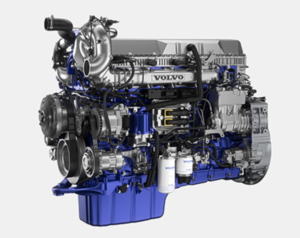The Volvo D13TC engine, and how it improves fuel efficiency
- February 11, 2022
- Blog
- Posted by Derick
- Leave your thoughts
What is different about the Volvo D13 TC engine?
Before we can explain what the difference is, we first have to identify what those two letters, T and C, on the end stand for. The T stands for turbo charged, and the C stands for compound. Now you may be thinking to yourself that turbo compound engines are not new, and you’d be correct (the concept has existed for about eighty years give or take, since 1954) , but what makes the D13TC engine different is how Volvo utilize this technology.
They used the turbo to enhance fuel economy.
Game – changed!
The turbo itself is a fixed geometry turbo which has minimal moving parts. This not only simplifies the technology, it also add the extra benefit that no additional maintenance is required with the turbocharger or TC unit. This helps deliver the legendary durability that Volvo Truck engines are known for.
The D13TC engine also uses a patented wave piston design which guides the flame back to the centre of the cylinder creating a more concentrated and efficient burn.
So how much more efficient does Volvo’s application of turbo compounding make the D13TC?
As much as 6% (as compared with the VGT, the TC shows a 6% difference) more efficient than the previous model. The amount of fuel savings that come from improvements of that magnitude are beyond substantial.
In addition to this, thanks to the innovative application Volvo uses for the turbo compound technology, it allows the D13TC to run at lower RPM’s which is all part and parcel of how this engine is able to deliver the incredible fuel efficiency it does.
Put simply the D13TC can deliver power in a wider range of RPMs and use less fuel doing so The advantage is in part the power is coming from a heat pressure recovery system that converts wasted exhaust pressure to mechanical energy, reducing the need for fuel to deliver energy.
The Volvo D13TC. Fuel efficiency, durability and performance all tied into one amazing package


